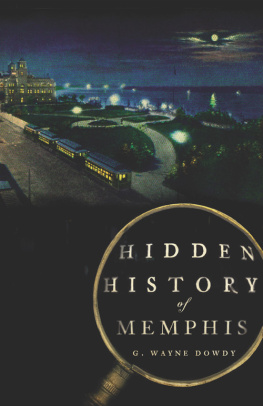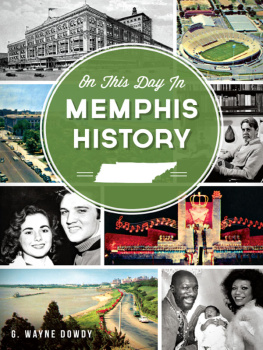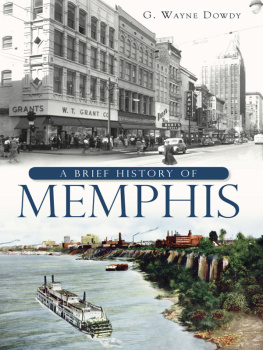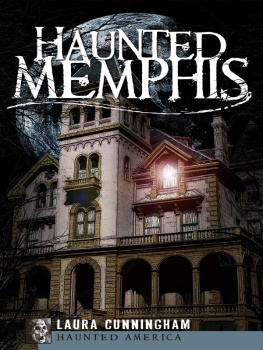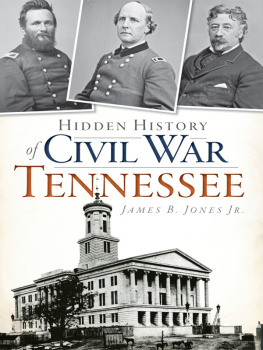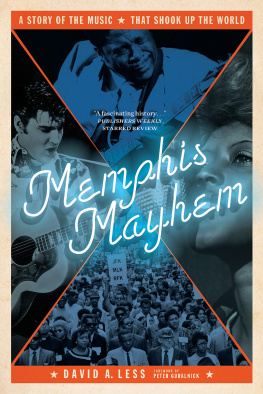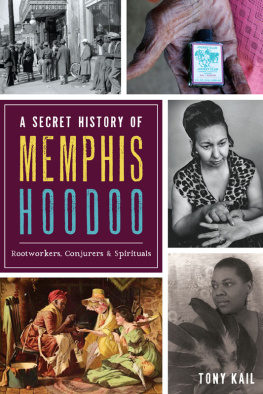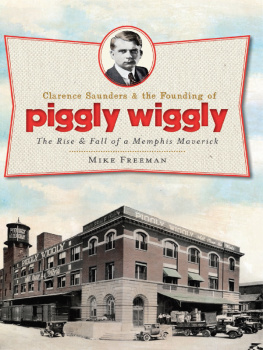HIDDEN HISTORY
of MEMPHIS
................................................................................................................
G. WAYNE DOWDY
Published by The History Press
Charleston, SC 29403
www.historypress.net
Front cover image: Confederate Park, main post office and the Mississippi River by moonlight, circa 1900.
Copyright 2010 by G. Wayne Dowdy
All rights reserved
All images courtesy of the Memphis and Shelby County Room, Memphis Public Library and Information Center.
First published 2010
e-book edition 2011
ISBN 978.1.61423.194.3
Library of Congress CIP data applied for.
Notice: The information in this book is true and complete to the best of our knowledge. It is offered without guarantee on the part of the author or The History Press. The author and The History Press disclaim all liability in connection with the use of this book.
All rights reserved. No part of this book may be reproduced or transmitted in any form whatsoever without prior written permission from the publisher except in the case of brief quotations embodied in critical articles and reviews.
For Barbara and Gerald
Contents
Acknowledgements
I could not have completed this task without the love and generosity of my family. I dedicate this book to my parents, Gerald McLain and Barbara Ann Nance Dowdy; my grandparents, John McLain and Ivy Lucile Heckle Dowdy and William Herbert and Lurline Belle Griffin Nance; my brother and sister-in-law, William Johnathan Bud and Robin Paige Clement Dowdy; my niece Britney Amber Dowdy; my nephews Cody Austin Dowdy and Brandon Ryan Dowdy; Uncle J.B. and Aunt Carole Nance; Uncle Larry H. Nance; Uncle Ron G. and Aunt Donna Nance; Aunt Viola Heckle; and my cousins Justin, Clay and Clint Nance; Lisa Nance Brooks; Mike and Forrest Brooks; Chris, Heather and Haleigh Nance; Gene and Jean Hair Miller; Laura Leigh Miller Traylor; John, Olivia Belle and Conrad Traylor; Eddie, Rachael, Alex and Stuart Miller; Faye Stabler; Kim Hair Sox; Donald, Corey and Luke Sox; Kerri Hair Brittingham; Michael, Emily, Jim, Trent and Grant Brittingham; Lynn and Debbie Hair; and W.D. Hair.
I also wish to thank my colleagues in the History and Social Sciences Department at the Benjamin L. Hooks Central LibraryBetty Blaylock, Joan Cannon, Gina Cordell, Laura Cunningham, Dr. Barbara D. Flanary, Sarah Frierson, Jasmine Holland, Verjeana Hunt, Dr. James R. Johnson, Thomas W. Jones, Patricia M. LaPointe, Gregg L. Newby, Patrick W. ODaniel, Belmar Toney and Marilyn Umfreesfor their friendship and encouragement over the years. I especially want to acknowledge Sarah Frierson for her generous assistance in scanning the photographs for this book. The administration of the Memphis Public Library and Information Center, director Keenon McCloy, interim deputy director Fred Bannerman-Williams and central public services manager Kay Mills Due, deserve recognition for their strong commitment to our local history collections and their unfailing support of my work.
As with my previous book, my colleague and friend Gina Cordell and her husband, Paul Gahn, kindly listened to countless tales of Memphis history when they would have rather talked about their Boston terrier, Violet. Thanks also go to My Kia Kima/TSB brudders Ken Kimble and Carey D. White. Ken asked me to give a program on the history of the Boy Scouts in Memphis, which is included in this book. For several years, Carey has also endured many hours of local history discussions while always prodding me to write in the past tense. Last but not least, I owe gratitude to Larry Pierce for his devotion to my niece Britney and her Nana and Grandpa.
The majority of the essays in Hidden History of Memphis were prepared especially for this volume, but a few of the chapters have been published elsewhere in different forms. Portions of Unquestioned Patriotism and A People United originally appeared in the West Tennessee Historical Society Papers; The Watkins Overton Papers and The Papers of Memphis Mayor Frank Tobey were first published in Tennessee Archivist; portions of A Loyal and Patriotic Citizenry originally appeared in Tennessee Archivist and the Journal of African American History (formerly Journal of Negro History); and the review of Jennifer Trosts Gateway to Justice was first published in the Arkansas Historical Quarterly. I thank the editors for their kind permission to reprint these sections.
Introduction
The year I turned five, 1969, the Commercial Appeal newspaper published a 152-page supplement celebrating the city of Memphiss sesquicentennial, or 150th, anniversary. Filled with exciting tales of the Bluff Citys past, I was enthralled by the pictures and stories contained in the slick, tabloid-style book. For years I would pull the volume out of the bookcase where my parents kept it to read about Davy Crocketts visit to Memphis, Nathan Bedford Forrests Civil War raid on the Bluff City, the yellow fever epidemics, W.C. Handy and the birth of blues music and the reign of Mr. Crump. At the same time, I also listened intently whenever my parents and grandparents talked of Memphis and the Mid-South during the Great Depression, World War II and the 1950s. At the time, I had no idea that reading the sesquicentennial supplement, combined with listening to my familys stories, would lead to my becoming a historian who specializes in the city of Memphis.
For well over a decade I have had the pleasure of preserving, making accessible and studying the history of the Bluff City as the archivist of the public librarys Memphis and Shelby County Room. Hidden History of Memphis is an attempt to share with others some of what I have learned from working with manuscript collections, archival newspapers and historic maps and photographs. Divided into two parts, the book examines the history and culture of the Bluff City during some of its most important decades. Well-known figures such as Elvis Presley, Sam Phillips, Clarence Saunders and E.H. Crump make appearances in this volume, but it is the less familiar subjects that make up the bulk of the book. For example, I pay particular attention to forgotten people and events, such as the Memphis gangster who inspired William Faulkner to write one of his most famous novels, the Boy Scout who captured German spies during World War I, the journalist who secured in 1945 the first interview with President Harry Truman and the Memphis radio station that pioneered the use of remote broadcasts to cover important news events. In addition, Hidden History of Memphis also discusses many of the primary and secondary sources that are available to those wanting to further chronicle the history of the Bluff City. Hopefully, readers of all ages will find something in these pages to inspire them as the sesquicentennial supplement did me.

As visitors drove across the Harahan Mississippi River Bridge, they saw this sign welcoming them to the Bluff City.
Part One
History and Culture
Memphis in the Twentieth Century
In 1905, a correspondent for the St. Louis Post-Dispatch reported that the only difference between Memphis and Hell is that Memphis has a river running along one side of it. As this comment suggests, rhetorically flogging Memphis was something of a cottage industry during the twentieth century as journalists, filmmakers and novelists highlighted the citys penchant for violence and provincialism while often overlooking the Bluff Citys significant contributions to American culture.

